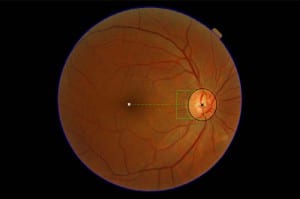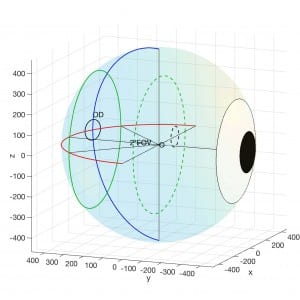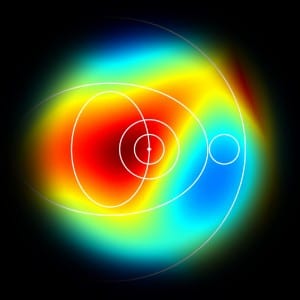The algorithm for the automatic detection of the ONH is improved and is now the fastest and second best (0.26% difference) in terms of performance compared to the best in literature, when tested on MESSIDOR dataset. Qualitative results are also improved with an elliptical approximation of the ONH boundary. This was possible by describing the photograph distortion is caused by the quasi-spherical shape of the eye.
A probability map is created based on a prospective database. The database includes 60 patients: 30 developed vision threatening DR / 30 did not. Approximately 10-year record from screening database for each patient (for an average of 7 visits each). The dataset includes more than 900 images and the analyses is made possible with the tools previously developed. The map returns the probability of developing vision threatening diabetic retinopathy given the location of the first detected microaneurysm for patients included in a diabetic retinopathy screening programme.
Example result from the ONH detection with elliptical correction:
The model of the eye used to quantify the distortion due to the orthogonal projection
of a curved surface:
Probability of developing vision threatening diabetic retinopathy given the location of
the first detected microaneurysm for patients included in a diabetic retinopathy
screening programme:


